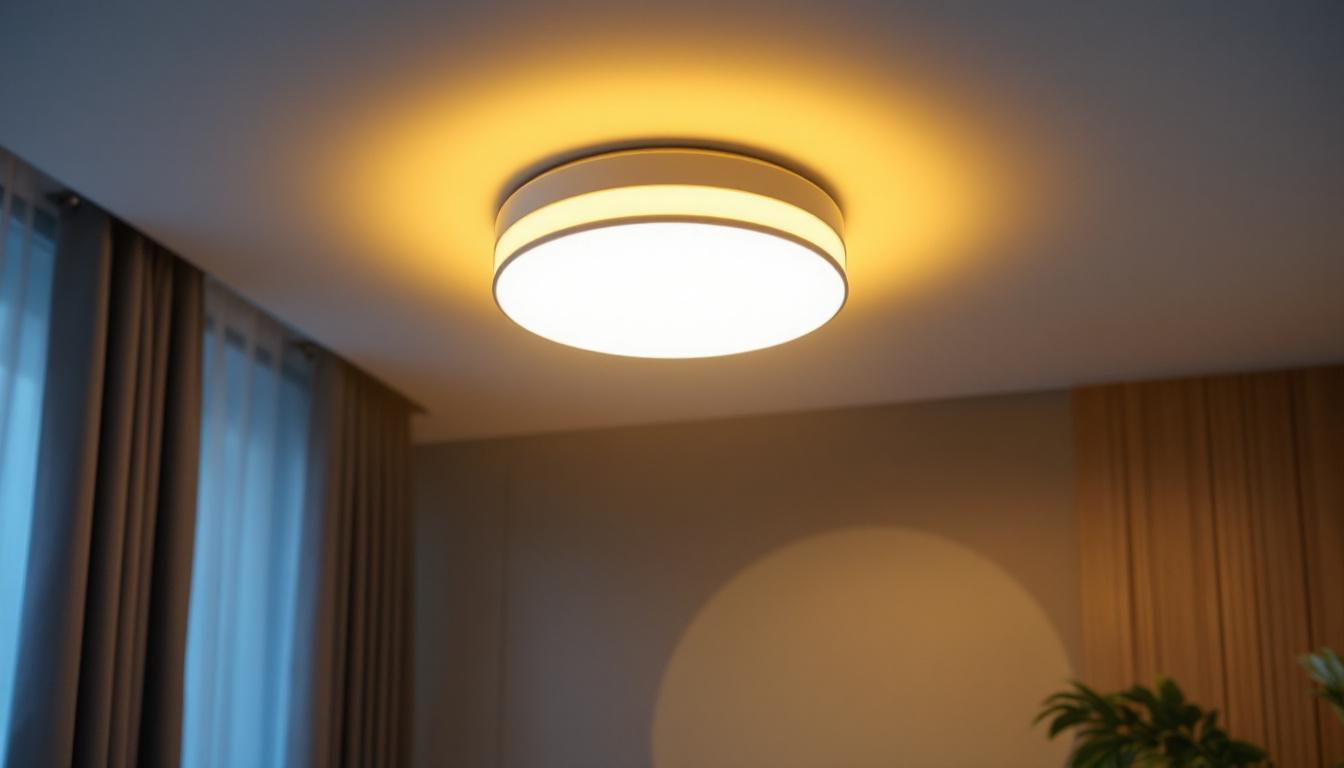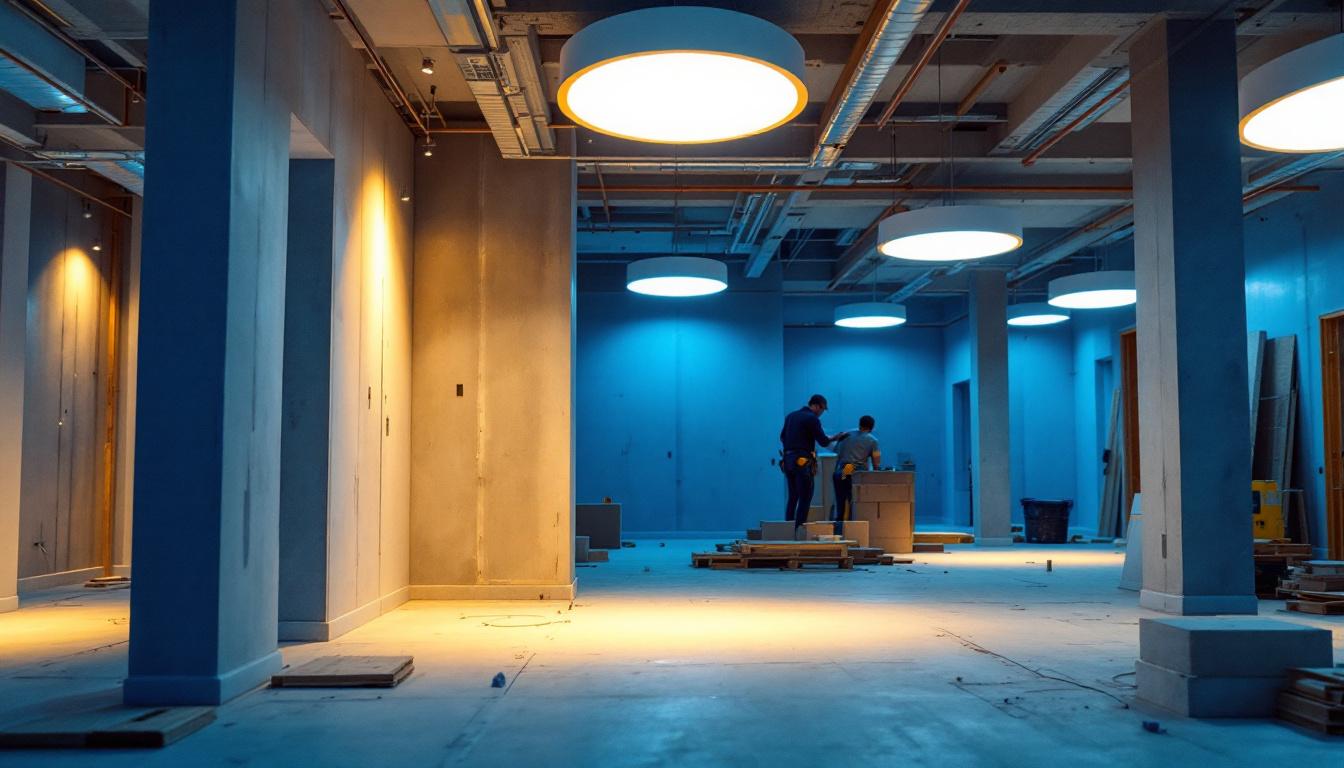
In the world of lighting design, flush LED ceiling lights have emerged as a popular choice for both residential and commercial spaces. Their sleek profile and energy efficiency make them an attractive option for contractors looking to provide modern solutions to their clients. This article aims to equip lighting contractors with essential tips and insights into selecting, installing, and maintaining flush LED ceiling lights.
Flush LED ceiling lights are designed to sit close to the ceiling, providing a streamlined look that complements various interior styles. These fixtures are particularly beneficial in spaces with low ceilings, where traditional hanging lights may feel cumbersome or overwhelming. Their sleek profile not only maximizes headroom but also creates a clean, unobtrusive appearance that can seamlessly blend into any decor.
One of the primary advantages of flush LED lights is their energy efficiency. Unlike traditional incandescent bulbs, LEDs consume significantly less power while providing the same amount of light. This not only reduces energy bills but also contributes to a more sustainable environment. Moreover, many flush LED lights are designed with dimming capabilities, allowing users to adjust the brightness according to their needs, further enhancing energy savings.
Additionally, flush LED lights have a longer lifespan, often lasting up to 25,000 hours or more. This longevity means less frequent replacements, which can save time and resources for both contractors and homeowners. The durability of LED technology also means that these lights are less prone to breakage compared to their traditional counterparts, making them a safer choice for households with children or pets.
Flush LED ceiling lights come in various designs, finishes, and sizes, making them suitable for a wide range of applications. From minimalist styles to more decorative options, contractors can find fixtures that fit the aesthetic of any space. This versatility allows for creative lighting solutions that enhance the overall ambiance of a room. For instance, in a modern kitchen, sleek, chrome-finished flush lights can provide a contemporary touch, while in a cozy bedroom, softer, warm-toned fixtures can create a relaxing atmosphere.
Furthermore, many flush LED ceiling lights are designed with customizable features, such as interchangeable shades or adjustable color temperatures, allowing homeowners to tailor their lighting to suit different moods or activities. This adaptability is particularly useful in multi-functional spaces, such as open-plan living areas, where lighting needs may vary throughout the day. By incorporating flush LED lights, homeowners can achieve a harmonious balance between style and functionality, elevating their interior spaces with ease.
Selecting the appropriate flush LED ceiling light involves several considerations. Understanding the specific needs of the space and the preferences of the client is crucial to making the right choice.
The size of the room and the height of the ceiling play a significant role in determining the type and size of the flush LED light fixture. In larger rooms, multiple fixtures may be needed to ensure even lighting distribution. Conversely, in smaller spaces, a single fixture may suffice, provided it offers adequate brightness.
For low ceilings, opt for fixtures that are slim and unobtrusive. This will help maintain an open feel while still providing necessary illumination. In contrast, higher ceilings may allow for more decorative options that can add character to the space. Additionally, consider the layout of the room; fixtures can be strategically placed to highlight architectural features or artwork, enhancing the overall aesthetic appeal.
Brightness is measured in lumens, and it is essential to choose a fixture that provides the right amount of light for the intended purpose. For example, kitchens and workspaces typically require brighter lighting, while bedrooms and living areas may benefit from softer, ambient light.
Color temperature, measured in Kelvins, also impacts the mood of a room. Warm white (around 2700K) creates a cozy atmosphere, while cool white (around 4000K) is more suitable for task-oriented areas. Understanding the desired ambiance can help contractors guide their clients in selecting the right color temperature. Furthermore, consider the use of dimmable LED fixtures, which allow for flexibility in lighting levels throughout the day, accommodating various activities and moods. This adaptability can be particularly beneficial in multifunctional spaces, where the lighting needs may shift from bright and focused to soft and relaxing as the day progresses.
Proper installation is crucial for maximizing the efficiency and effectiveness of flush LED ceiling lights. Here are some key tips for lighting contractors to consider during the installation process.
Before installation, it is essential to plan the layout of the fixtures. Consider the room’s dimensions, furniture placement, and the intended use of the space. A well-thought-out layout will ensure even light distribution and minimize shadows.
Using a lighting design software can help visualize the arrangement and determine the optimal number of fixtures needed. This step is particularly important in larger spaces where multiple fixtures may be required. Additionally, consider the color temperature of the LED lights; warmer tones can create a cozy atmosphere, while cooler tones may be more suitable for workspaces or kitchens. Testing different configurations with temporary fixtures can also provide insight into how the light interacts with the room’s features.
Safety should always be the top priority when installing electrical fixtures. Ensure that the power is turned off before beginning any installation work. Verify that the electrical connections are secure and comply with local building codes.
Using a junction box that is rated for the weight of the fixture is also essential. This ensures that the flush LED light is securely mounted and reduces the risk of accidents or damage over time. Furthermore, consider using wire nuts or connectors that provide a solid connection and are rated for the specific load of the LED lights. This attention to detail will not only enhance safety but also prolong the lifespan of the fixtures by preventing potential electrical issues.
Additionally, it’s wise to check the compatibility of the LED fixtures with existing dimmer switches if applicable. Some LED lights may flicker or not function properly with older dimmer technologies, so upgrading to a compatible dimmer can enhance the overall lighting experience. Furthermore, maintaining a clean work environment during installation will help prevent any debris from interfering with the electrical components, ensuring a smooth and safe installation process.
While flush LED ceiling lights are known for their longevity and low maintenance, occasional issues may arise. Understanding how to troubleshoot common problems can save time and enhance client satisfaction.
Regular cleaning of flush LED fixtures is essential for maintaining their brightness and appearance. Dust and debris can accumulate over time, diminishing the light output. Use a soft cloth or a microfiber duster to gently clean the surface of the fixture.
For fixtures with glass or acrylic covers, a mild cleaning solution can be used. However, avoid abrasive materials that could scratch the surface. Regular maintenance will help ensure that the fixtures continue to perform optimally. Additionally, it is beneficial to schedule cleaning during seasonal changes, as this can help prevent the buildup of grime and allow for a more thorough inspection of the fixtures for any signs of wear or damage.
Furthermore, consider the environment in which the fixtures are installed. Areas with high humidity, such as bathrooms or kitchens, may require more frequent cleaning due to moisture accumulation. Using a damp cloth can help remove sticky residues without damaging the fixture, ensuring that the lights remain both functional and aesthetically pleasing.
Occasionally, flush LED ceiling lights may flicker or fail to turn on. In such cases, it is important to check the power supply and ensure that the fixture is properly connected. If the issue persists, it may indicate a problem with the LED driver or the fixture itself.
In the event of a malfunction, consulting the manufacturer’s warranty and guidelines can provide insight into repair or replacement options. Educating clients about the warranty can also enhance their confidence in the product. It is also wise to inform clients about the importance of using compatible dimmers and switches, as incompatible devices can lead to flickering or buzzing sounds, which may detract from the overall experience of the lighting.
Additionally, if a fixture is experiencing frequent issues, it may be worth considering the installation of surge protectors to safeguard against voltage spikes that can damage LED components. Providing clients with tips on how to monitor their lighting systems can empower them to address minor issues before they escalate, ultimately leading to a more satisfying and enduring lighting solution.
As energy efficiency becomes increasingly important, flush LED ceiling lights stand out as a sustainable choice. Lighting contractors can play a vital role in promoting these eco-friendly solutions to their clients.
Contractors should be prepared to discuss the energy savings associated with flush LED lights compared to traditional incandescent or fluorescent options. By calculating the potential savings over time, clients can see the long-term benefits of investing in LED technology.
For example, replacing a 60-watt incandescent bulb with a 10-watt LED can lead to significant savings on energy bills. Providing clients with a clear understanding of these savings can help them make informed decisions.
In addition to energy savings, contractors can encourage clients to adopt sustainable practices by recommending fixtures made from recyclable materials. Many manufacturers are now producing LED lights with eco-friendly designs, which can further enhance a client’s commitment to sustainability.
By promoting these practices, contractors not only contribute to a healthier environment but also position themselves as knowledgeable professionals in the lighting industry.
Flush LED ceiling lights offer a modern, energy-efficient solution for various lighting needs. By understanding the benefits, making informed choices during selection, and ensuring proper installation and maintenance, lighting contractors can provide exceptional service to their clients.
As the demand for energy-efficient lighting continues to grow, staying informed about the latest trends and technologies in flush LED lighting will be essential for contractors. By following these quick tips, lighting professionals can enhance their expertise and deliver outstanding results that meet the evolving needs of their clients.
Ready to elevate your lighting projects with the sleek efficiency of flush LED ceiling lights? At LumenWholesale, we provide lighting contractors with the highest quality, spec-grade lighting products at prices that can’t be beaten. Our commitment to cutting out the middleman means you enjoy superior lighting without the inflated markups, ensuring your projects shine with reliability and high performance. With our hassle-free bulk buying and free shipping, you can stock up on premium lighting solutions at the best value. Don’t compromise on quality or cost—choose LumenWholesale for a seamless blend of excellence and convenience. Wholesale Lighting at the Best Value is just a click away.

Discover why lighting contractors should prioritize sidewalk solar lights in their projects.

Discover the key considerations and expert tips for installing recessed lighting in new construction projects.

Discover how LED pendant lights are revolutionizing the lighting industry by enhancing efficiency and aesthetics for contractors.

Discover why lighting contractors should prioritize motion sensors in their projects.